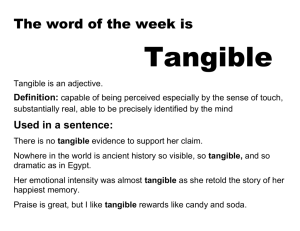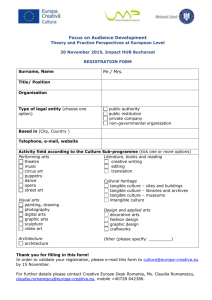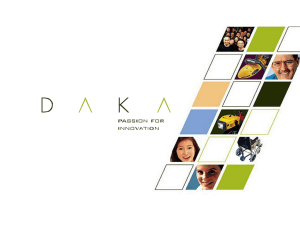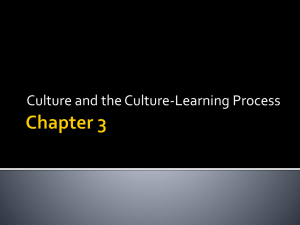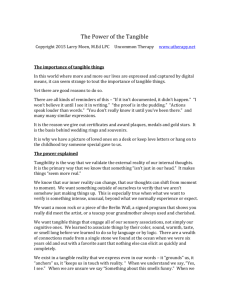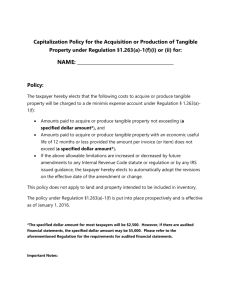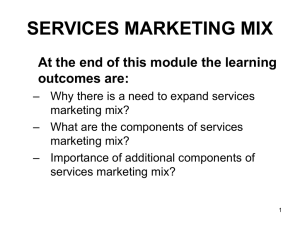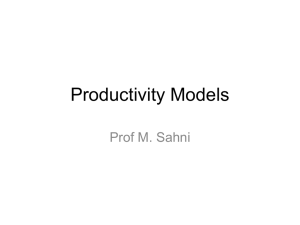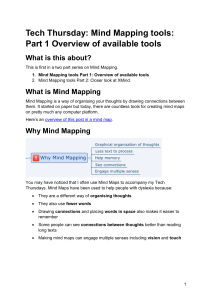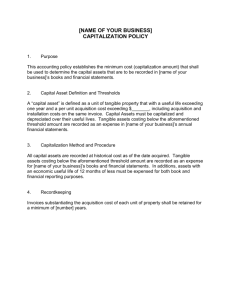Contributing to the efficiency and effectiveness of Networks
advertisement
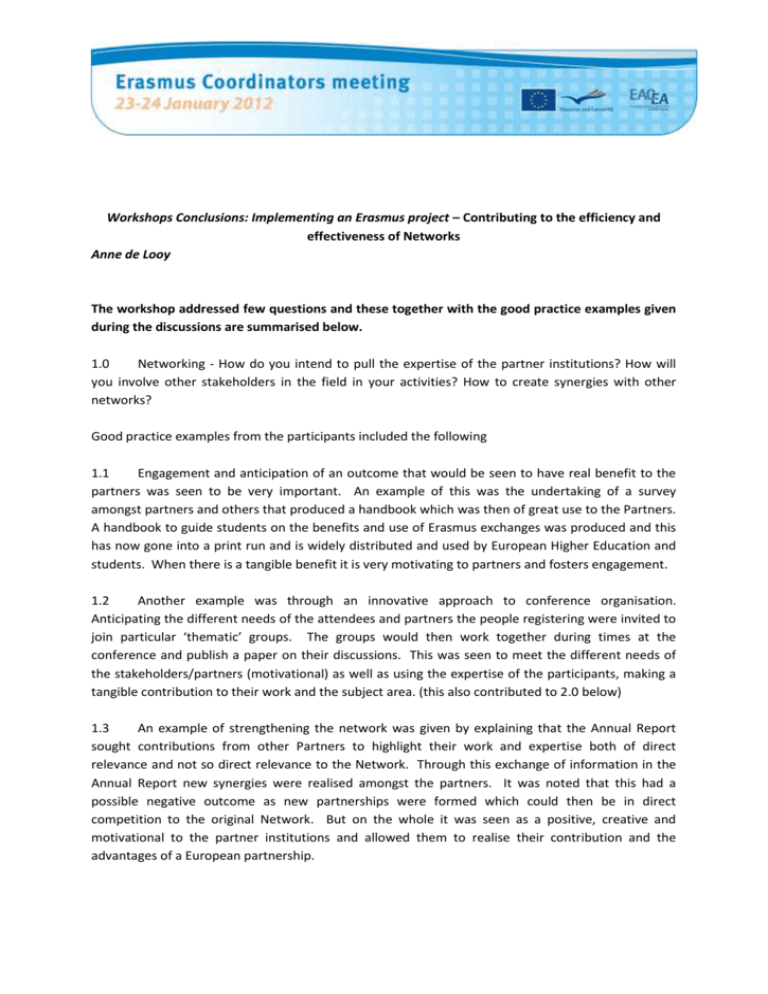
Workshops Conclusions: Implementing an Erasmus project – Contributing to the efficiency and effectiveness of Networks Anne de Looy The workshop addressed few questions and these together with the good practice examples given during the discussions are summarised below. 1.0 Networking - How do you intend to pull the expertise of the partner institutions? How will you involve other stakeholders in the field in your activities? How to create synergies with other networks? Good practice examples from the participants included the following 1.1 Engagement and anticipation of an outcome that would be seen to have real benefit to the partners was seen to be very important. An example of this was the undertaking of a survey amongst partners and others that produced a handbook which was then of great use to the Partners. A handbook to guide students on the benefits and use of Erasmus exchanges was produced and this has now gone into a print run and is widely distributed and used by European Higher Education and students. When there is a tangible benefit it is very motivating to partners and fosters engagement. 1.2 Another example was through an innovative approach to conference organisation. Anticipating the different needs of the attendees and partners the people registering were invited to join particular ‘thematic’ groups. The groups would then work together during times at the conference and publish a paper on their discussions. This was seen to meet the different needs of the stakeholders/partners (motivational) as well as using the expertise of the participants, making a tangible contribution to their work and the subject area. (this also contributed to 2.0 below) 1.3 An example of strengthening the network was given by explaining that the Annual Report sought contributions from other Partners to highlight their work and expertise both of direct relevance and not so direct relevance to the Network. Through this exchange of information in the Annual Report new synergies were realised amongst the partners. It was noted that this had a possible negative outcome as new partnerships were formed which could then be in direct competition to the original Network. But on the whole it was seen as a positive, creative and motivational to the partner institutions and allowed them to realise their contribution and the advantages of a European partnership. 2.0 Learning - Please explain how your network will contribute to the advancement of knowledge or what are your innovative approaches related to strategies, means, tools, processes. 2.1 The work undertaken by the Network partners can be put together creatively into papers/booklets and other artefacts which can then be published and disseminated. This has the effect in three ways of increasing learning. Firstly by putting together information and disseminating it increases exposure to new knowledge/language skills and other creative opportunities. Secondly areas where there are gaps in knowledge to learning are identified and can be addressed; for example by establishing working groups or new Networks. And thirdly partners can see where they may have synergies and contributions to make to learning with or for other partners. 2.2 An example of the benefits of drawing on the wide expertise of the partners and also their wider networks was to produce a book. The book used commissioned experts and contained information for associated disciplines relevant to the subject area of the Network itself. This was highly innovative and the Network itself edited the book. The book provided recognition for the Network, European expertise and made a contribution to knowledge and learning on a world-wide basis. 2.3 Briefing papers and other outputs from conferences (see 1.2 above) can also be an important way to contribute to learning and knowledge bases. 2.4 A creative tool which was used was XMind (http://en.wikipedia.org/wiki/XMIND). Using this tool it is possible to collaboratively share and integrate ideas between partners producing new ideas and directions. 2.5 The daily interaction between partners using virtual meeting technology and the discipline of speaking/writing in English or other languages should also not be underestimated as a powerful learning tool for partners. Although not explicitly an outcome networking on a European level produces critical learning about other European cultures and expertise. 3.0 Shaping practices and policies - How to make measurable impact in the field concerned (make innovation and good practices available, act as incubator for new projects, make recommendations to policy makers, etc...)? 3.1 On the 23rd of January the workshop group itself had a significant insight into the area of shaping policy and practices. The group identified that projects need to consider which policies and practices they wish to influence/alter or contribute to at the beginning of the project/Network. Once this has been done then the Network can organise its activities to achieve those outcomes and maximise the impact. “Start with the end in mind”. The workshop participants realised that unless this is undertaken and guides the project the actual impact that a project may have will not be as great as it could have been. 3.2 It is difficult to measure and evaluate impact. Impact cannot usually be measured as specific outputs ie tangible products rather impact should be thought of as outcomes expressed as change, influencing action or ‘making a difference’ in the way people (governments etc) think or behave. For example 1.3 above could be seen as having an impact if the intended outcome was forming new networks. To capture these intangibles the creation of case studies could be used. By developing a case study explaining the way information has been distributed or used and what the value is likely to have been or has been it is possible to give insight into the impact it has had or likely to have in the longer term. Other examples of areas where case studies could show impact are in policies and procedural change. 3.3 A Network specifically engaged in developing distance learning invited a ‘high level’ group to be advisors to the project. They were asked to advise on strategy and others in the Network used this information at a pragmatic level. This tactic drew in important policy makers and strategic high level people making them aware of the Network and the expertise being used across Europe. Thereby increasing the likelihood of producing change/impact. 3.4 A tool that could be used to demonstrate the use of a website was Google Analytics or ranking in Google search engines. Polls and other mechanisms posted on websites can also be used to evaluate the use and value of websites. These are all tangible and important but whether they produce ‘change’ in the user cannot be evaluated so easily. Information exchange was very fruitful and I thank the group for their positive engagement in this area of interest to all Networks and others looking to make their activities more efficient and effective.
